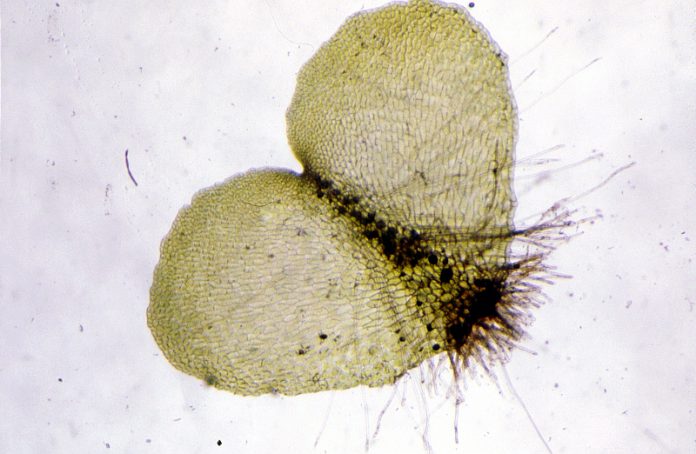Paul G. Wolf, Professor and Chair, Biological Sciences at The University of Alabama in Huntsville, explains cellular processes and attempts to link them to the chromosome number patterns seen in a particular group of plants: ferns
Chromosome number remains relatively constant within species and varies between species. Interesting exceptions include a butterfly species with numbers ranging from 56 to 106 and several plant species that are also prone to breaking the above rule, which was established over 100 years ago. In fact, changes in the chromosome complement in an organism’s cells is often a clue that something has gone awry. Human cancer cells usually do not have the usual 23 pairs of chromosomes, but rather a mish-mash of broken chromosomes, some fused to others, some in copies of more than the usual two. It is generally thought that the processes that maintain constant chromosome number and structure within an individual’s cells and within most species are the same processes that, when fail, lead to variation across species and to the bizarre chromosome patterns seen in animal tumours. Here, I review some of these cellular processes and attempt to link them to the chromosome number patterns seen in a particular group of plants: the ferns, which in general have high chromosome numbers, including some species with over 1,000!
Chromosomes & cell cycle checkpoints
The chromosomes house an organism’s genome, which encodes the various proteins that operate the cells and ensure correct development and processes that enable organisms to function and reproduce. Changes in the position or copy number of these genes can disrupt normal function. Thus, careful monitoring is needed to keep these millions of pieces of code in place. When a cell line is dividing, the entire genome must be copied accurately. This process will not begin unless all the building blocks are in place, and the process of cell division will not begin until the genome has been duplicated accurately. Finally, the chromosomes will not split into identical copies unless each is correctly attached by protein strands to the newly forming daughter cells. Each of these critical steps involves a complex series of monitoring systems known as the cell cycle checkpoints. If these checkpoints operate properly, then any cell that fails a checkpoint should enter programmed cell death to avoid replicating a failing system. Cell biologists are still working out the finer details of the checkpoint systems, including which genes and proteins are involved.
Cell biology & genome evolution
Although plants and animals share many aspects of cell biology, they also differ in fundamental ways, which has implications for how the cell cycle relates to genome evolution. Most animals have a highly regulated developmental process, starting with an embryo in which all the various cell types become differentiated. Errors early in development can lead to drastic repercussions later in life. Conversely, plants have more open systems, whereby new organs can develop from almost any dividing cell. Thus, in animals, the cells that will become the gametes are fixed into what is known as the germline, whereas in plants these can be produced at any time; a cell at the tip of a tree can divide to become a leaf, a new branch, or even a flower. These differences can affect several processes, including special chemical markings that are added to the genome after replication, the epigenetic markers. Most of these markers are usually cleansed during gamete formation. Gametes, the egg and sperm, must house exactly half a full genome complement so that their fusion produces the correct copy number of each gene. Thus, we have 46 chromosomes in most of our cells, but only 23 in our gametes. It is the process of meiosis that ensures that these chromosome pairs separate correctly. However, although meiosis produces gametes in animals, it produces spores in plants. The spores then grow into an organism (the gametophyte) with half the number of chromosomes. From this gametophyte, the gametes are produced by normal cell and nuclear division (mitosis). Thus, the intergenerational patterns of epigenetic patterning are likely to differ between plants and animals. So how do these processes relate to plants with high chromosome numbers?
Chromosome number patterns in ferns
Animals and flowering plants have an average gamete chromosome number in the 20s, about what we humans have. Ferns average about four times that. For most groups of organisms, there is a poor correlation between chromosome number and genome size. This is possibly because there are many ways in which genome size can vary, including the invasion or loss of parasitic DNA (transposable elements) and genome reorganisation (often through the failure of the above checkpoint systems at certain evolutionary stages, usually in the formation of new species). Conversely, in ferns there is a reasonably good correlation between chromosome number and genome size, implying that either ferns are increasing their chromosome numbers more evenly and frequently, or ferns possess more accurate systems for controlling genome integrity.
Priorities for research in biological sciences
Over the next few years, my research team at The University of Alabama in Huntsville will be exploring these issues in a project funded by the United States National Science Foundation. We will be looking at genome stability following the production of both natural and artificial tetraploids – plants with double the normal number of chromosomes. In flowering plants, several published studies show that the extra material in a polyploid is lost at an alarming rate over subsequent generations. We hypothesize that this will be slower in ferns.
We also plan to explore epigenetic patterns to determine if characteristics of the fern life cycle affect epigenetic repatterning and control of chromosome pairing during meiosis. We also hope to use data from several fern genome projects to explore the genes involved in cell cycle checkpoints to see if these differ in number or other features from those of other plants. We are not expecting that ferns can cure cancer (in fact, many are known to contain carcinogens). However, our project illustrates the potential for basic science to further understanding of processes essential for all life and, therefore, helping to understand how and why things go wrong.
Please note: This is a commercial profile











